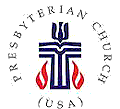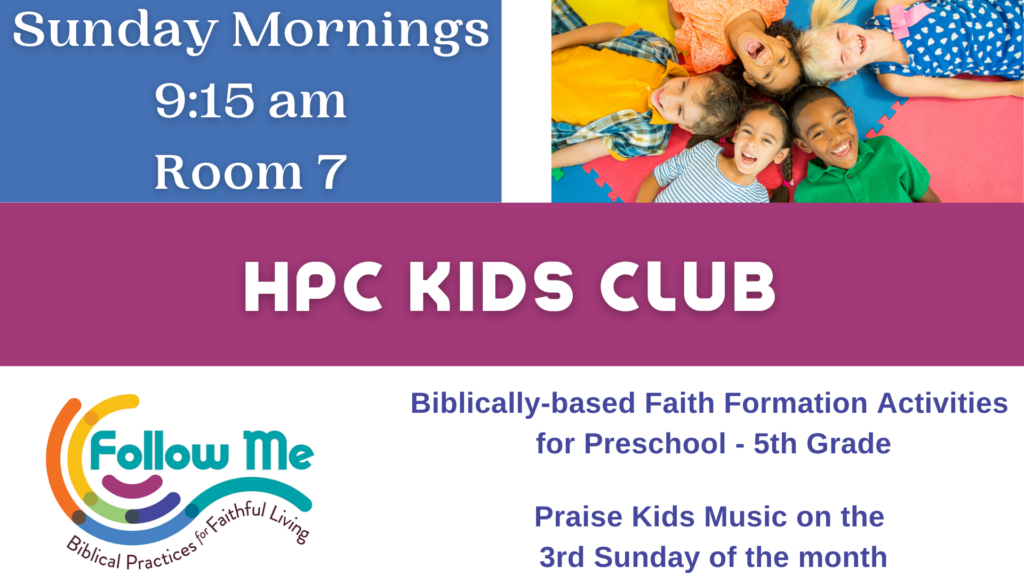I love home renovation shows. I’m a particular sucker for the Property Brothers. It’s fascinating to watch them transform spaces with facelifts that make them look and feel like totally new homes. Once you’ve watched a few episodes, you feel like an expert yourself, and learn to expect a few things along the way, like when renovating older homes, there will always be some surprises, from its asbestos under the tiles to knob and tube wiring. Recently in the competition series Brother vs Brother, both brothers discovered their projects had some considerable structural issues. Walls had to be completely rebuilt, and they poured more new foundation and footings for posts than either of them expected. Thousands of dollars and several days later, they could continue where they left off. It was definitely a set-back, but clear that he had no other option. Like many of these obstacles, the solutions are pretty straightforward: the “bones” and structure of the house have to be attended to in order for any further work to be safe and successful.
Good foundations matter. That is the theme carried in both of our scripture readings for today. In Matthew’s gospel, they come as words from Jesus himself at the end of the sermon on the mount. These chapters have outlined what it means to be a disciple, beginning with a list of blessings, the Beatitudes. They speak to the nuts and bolts of living out our lives of faith in relation to others, particularly those who are challenging to us. And then Jesus wraps it up with this final reminder that takes us almost back to the beginning. In order to be strong and faithful, his followers must ground themselves in the words he has spoken, just as a person builds a house on a rock. Inaction on these instructions are like building on sand. Things are going to shift, and the wind and rain will quickly cause its demise. It’s a pretty straightforward message about taking this lengthy hillside sermon not just to heart, but into tangible action as well.
As people of faith, our foundations should be in the promises from God; those outlined by Christ himself and those proclaimed throughout the entirety of scripture. They are the bedrocks of our faith that allow us to build our lives in a way that is shaped by our relationship with the Divine. These foundations are what many of our most loved hymns proclaim, distilling our faith into the critical aspects worth repeating in song to commit them to our memories. Some of these central promises are featured in the hymn How Firm a Foundation. In 1787, a British Baptist pastor named John Rippon published a church hymnal with an extensive collection of hymns to serve as an appendix to Dr Watt’s Psalms and Hymns, including this classic which was originally titled “Exceedingly Great and Precious Promises[i].” The author is unknown, but attributed a “K,” which most scholars assume references his Minister of Music, Robert Keene, who helped put the collection together. The seven original stanzas were based on various biblical promises from Scripture, including Isaiah 41:10, “do not fear, for I am with you”; Isaiah 43:2, “when you pass through the waters, I will be with you”; 2 Corinthians 12:9, “my grace is sufficient for you”; and Hebrews 13:5, “I will never leave you or forsake you.” Sound familiar? The hymn speaks them almost verbatim. Together, it serves as one hymnologist puts it, like “a sermon in verse[ii].” It’s not surprising that this hymn has become a favorite of Christians, including several notable American leaders including Teddy Roosevelt. It is a song that helps us cling to the promises of our faith and remind ourselves of where we are rooted. Singing about these foundations of faith provide us comfort in facing the storms, and the strength on which to build our responses to them.
Paul, master of mixing metaphors, takes on the illustration of building in 1 Corinthians 3 in relation to what it means to be the church. These verses speak to the importance of the urgency of constructing a church with integrity. The first step, of course, is to pay attention to the foundation, which can only be Jesus Christ. Keep in mind that in the early church, references to building would not have been about physical edifices. Paul wasn’t presenting a capital campaign. The word used for church in Greek, ekklesia, refers not to any kind of structure, but rather a gathering of people.
Paul’s architectural imagery serves to draw the Corinthians’ attention to the nature of their community . . . He calls the community to be self-reflective and to evaluate what they and their leaders are building[iii].
A lot of times we think about the early church as some sort of perfect utopian community of believers who all shared everything without any disagreement. The totality of Paul’s letters, particularly 1 Corinthians, quickly corrects us of this misnomer, and reminds us that from the beginning the church has wrestled with what it means to be faithful to the gospel of Jesus Christ. W. Michael Chittum reminds us this is still a challenge for us today:
Every Christian church, from the most liberal to the most conservative, makes the claim that it is based on the foundation of Jesus Christ, and many condemn and exclude those who disagree with their own particular theological interpretations. Do the differences in theological approaches by these differing churches constitute changing the foundation, or is it only a difference in the “stuff” constructed on the foundation? (see 1 Cor. 3:12-15)[iv]
I am struck by this every time I engage with Christians who aren’t from our particular denominational tradition, and even sometimes with whose who are as faithful to being Presbyterian as I am. This week, I had the joy of spending time with a new group of siblings in Christ at a gathering of the Cherokee County Ministerial Association. On Wednesday, 32 of us gathered for lunch, representing a variety of congregations and faith-based non-profits around the county. As introductions were made, part of me quickly felt like a fish out of water, with so many coming from more evangelical and non-denominational traditions. I admit my own bias was that I would not have much in common with those Christians, some of whom have traditions that don’t often embrace women as pastors, for example. But, as tends to happen with God, I was humbled and reminded to be open as the discussion began and the leader talked about the importance of a shared faith together and unity in Christ. He shared news of conversations happening around racial reconciliation in Cherokee County, and a shared worship event at the Woodstock Amphitheater on the evening of July 29th with over 25 churches already participating. We heard from a free medical clinic in Canton and their ministry of care to those who are uninsured or underinsured. In all of this, our common cause was not just to “do good,” but based in the foundation of being followers of Jesus Christ. It was a reminder that even with all of our differences (and there are some theological and practical ones that matter to me!), our foundation is the same. Sometimes, in a group of other Christians who see things differently, that can be a hard thing to say with confidence. We get caught up in the nuance. Maybe we should try to be more caught up in Jesus instead.
But even that might not free us from controversy. In the 4th century, theologians like Origen and Arius got into intense fighting with Athanasius and others regarding whether God the Father and God the Son were one and the same substance. Interestingly, this conversation was in part prompted by the Emperor Constantine’s attempts to unify and establish a single, approved Christian faith during his reign. In seminary, our church history professor shared with us a clever song designed to identify the complicated theological arguments, set to the tune of “Supercalifragilisticexpialoadocius” from Mary Poppins, written by a former student named Dan Idzikowski, retitled “superchristological and homoousiosis.” Put in non-tongue-twisting terms, it was this work begun at the council of Nicea and continuing in additional conversations in Chalcedon and Constantinople that led to our understand of God being one substance but three persons existing in balance and inextricable relationship with one another. What we believe about Jesus Christ as the foundation certainly matters. And while difficult, I think those conversations matter, particularly for what it means to be the church, because they mean we are, as Paul hopes, paying attention to the foundation on which everything is built.
That is also part of the story behind another hymn “The Church’s One Foundation.” In the mid-1900s, the Church of England was embroiled in theological controversy of its own after a book was written by one of the influential Anglican bishops, John William Colenso, which attacked the historical accuracy of the Pentateuch, the first 5 books of what we know as the Old Testament. Pastor Samuel J. Stone was deeply bothered by this book.
Stone was known as a man of spotless character; he was chivalrous toward the weak and needy, yet he was a violent fighter for the conservative faith that was being so sternly attacked in his day. He refused to compromise one iota before Higher Criticism and the evolutionary philosophies that were becoming increasingly popular. A personal faith in the inspired Scriptures was enough for him . . . He wanted to combat the attacks of modern scholarship and liberalism which he felt would soon divide and destroy the church[v].
In response, then, he wrote a collection of 12 hymns, “Lyra of the Faithful,” all based on the Apostles’ Creed. “The Church’s One Foundation” was based on the Ninth Article of the Creed, which begins with the phrase “the holy catholic church” – catholic meaning universal. Stone was insistent that:
The unity of the Church must rest solely with a recognition of the Lordship of Christ as its head and not on the views and interpretations of men[vi].
Although I don’t agree with many of the finer points of Stone’s arguments, and am grateful for the work of scholars in theology and biblical interpretation that I believe has been guided by the Holy Spirit to move us forward, I agree wholeheartedly with his assertion that the foundation of the church must always remain in Jesus Christ. What we build on that foundation, the work of our communities of faith, will be tested and refined over time by God, just as Paul indicates in 1 Corinthians. Our theology matters because it impacts what is built upon it. Paying attention to the foundations, even things that might seem on the surface as no-brainers, like believing in Jesus Christ, bears implications for what structures become put on top of it. When we talk, then, about what it means to be the church, and how we “do ministry” together – whether it is a stewardship campaign or a slip and slide on the church lawn, a closet of clothing for people in need, or selections of hymns in worship, we have to think about the theology that undergirds these decisions. Part of our responsibility as the church is to make sure that whatever we are doing, we are doing on the foundation of our understanding of Jesus Christ as Lord. The same is true for our lives beyond these walls; we must ground them in the foundations of Christ. If we lose sight of that, we have lost sight of the gospel. That’s why hymns, I think, are so important. They remind us to not lose what is most important, and they bring us back home again to the good news. They unite more than just our voices; they unite us in faith and in proclaiming that in the midst of all we might see differently, together we proclaim the same Lord, now and forever. Confident of that harmony which we share, let us stand and sing together:
~Rev. Elizabeth Lovell Milford
July 1, 2018
——————————————————————–
[i] Robert J. Morgan, Then Sings My Soul: 150 of the World’s Greatest Hymn Stories, (Nashville, TN: W Publishing Group, 2011).
[ii] Kenneth W. Osbeck, 101 Hymn Stories: The Inspiring True Stories Behind 101 Favorite Hymns, (Grand Rapids, MI: Kregel Publications, 1982).
[iii] Melanie Johnson-Debaufre, “1 Corinthians 3:10-11, 16-23: Exegetical Perspective,” Feasting on the Word: Year A, Volume 1, David L. Bartlett and Barbara Brown Taylor, editors, (Louisville, KY: Westminster John Knox Press, 2010).
[iv] W. Michael Chittum, “1 Corinthians 3:10-11, 16-23: Theological Perspective,” Feasting on the Word: Year A, Volume 1, David L. Bartlett and Barbara Brown Taylor, editors, (Louisville, KY: Westminster John Knox Press, 2010).
[v] Kenneth W. Osbeck, 101 Hymn Stories: The Inspiring True Stories Behind 101 Favorite Hymns, (Grand Rapids, MI: Kregel Publications, 1982).
[vi] Osbeck.




Leave a Reply
You must be logged in to post a comment.